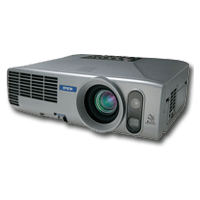Consumer Electronic Information: The Basics of the DLP Projector
By Simon Canfield
Projectors have come a long way in the past few decades. The desktop fossils that were once used to show home moviesor classroom filmstrips are a thing of the past. With todays technology, you can now experience a projected movie that emulates a full-blown theater flick, without thetime, effort and hassle of standing in line at the local cinema.
DLP projectors also known as Digital Light Processing projectors have brought the proverbial silver screen to the home front. The fact that some theaters actually use this type of technology for feature movie projection makes this truer than you might imagine. After being digitally converted and placed on an optical disk much in the same way as DVD technology is produced the images are fed intothe projector and sent to the movie screen. The main difference is that DLP projectors offer a high definition experience, as opposed to that of a DVD. The result is a picture that very nearly rivals the quality of a 70mm projection, but without the imperfections.
The color accuracy of the DLP system is outstanding, with an end result that beats LCD technology. Some of the advantages that make a DLP the projector of choice are its low power consumption, compactness, micro-mirror construction (which is responsible for the high level screen resolution), high contrast and brightness. All in all, this is the closest that anyone can come to having a bona fide cinema within the confines of their home.
With every set of pros, youll always find some cons lurking in the shadows. Such is the case with the DLP projector. For those who are particularly sensitive to certain visual effects, the DLP design produces a type of rainbow effect, which could serve as a distraction when looking from one side of the screen to the other during viewing. This will play out as a brief splash of colors, which is simply a result of the type of technology thats used in the production of the DLP. Most people dont even notice this color display, but those who are in tune to that sort of thing may see it as an annoyance.
While this is also true for LCD projectors, consumers mightbe disappointed to know that DLP projectors need to have their light source changed after every 1,000 to 2,000 viewing hours. All in all, though, this is nothing new and, when you consider the higher quality that this type ofsystem offers, it shouldnt be seen as much of an inconvenience at all.
Perhaps the most inhibitive aspect to the acquisition of a home theater system, such as the DLP, is that the cost willtypically fall within the range of $5,000 to $10,000 for the mid-range systems, once you purchase everything that youll need in order to complete the set-up. In addition to that, youll have to consider the cost of the rest of your home theater system, since these figures only factor in the DLP expenses.
For those who can afford to do so, the DLP projector is an excellent investment, despite its few downfalls. While no projection system is perfect, DLP is currently the most popular set-up on the market and provides a powerful theater experience for those who arent inhibited by space or finances.
(c) 2005 Simon Canfield - All Rights Reserved
Simon Canfield is a hi-tech enthusiast and freelance author.
AllAboutHeadPhones.comBigScreenTVsecrets.com
Article Source: http://EzineArticles.com/?expert=SimonCanfield
http://EzineArticles.com/?Consumer-Electronic-Information:--The-Basics-of-the-DLP-Projector&id=31056


0 comments:
Post a Comment